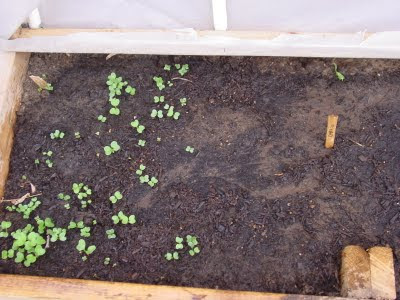I usually clean out my worm bins a couple of times a year. The goal is to remove the worm castings and to replenish the organic content of the bin so that it can spend the winter regenerating more worms without being disturbed. Then in the spring when there is a rush on worms at the compost site, this bin will be ready. In the spring, I will screen another bin as a back up. This way I pertually have a bin full of worms to harvest.
It is fairly easy to determine which bin to screen. When the contents of the bin are homoginously dark black and virtually devoid of worms, it is time to harvest. The vermicompost is the waste from the worms, their excrement. As with most creatures, their own excrement is toxic to them. When the bin contains more of their waste then of food, they either move on or die.

Shovel the material into a screen. I vacillate between screening and not screening. I suppose it depends on the application. Screening allows for a finer material, so if you are going to topdress houseplants or a lawn, then I would screen it. If there are lots of undigested particles, if the material has trash in it, then I would screen it. If it's just going into the garden as a soil amendment or if it is already exceptionally fine, then screening is not necessary.
If it is going to be screened, you will need to build a screen. Obviously the size of the mesh determines the size of the finished product. I usually use 1/2" hardware cloth available at all hardware stores. Chicken wire works fine, too; whatever's available. A couple of 2 x 4's and some staples are all you need to finish the construction of the screen.

After you've screened it, you'll be left with two products: what we in the biz call overs and unders.

The unders (that which falls through the screen) is what you are after. I make a quick check to see if any worms fell through and toss any I find back into the bin. The unders are ready to use now in whatever fashion you deem fit.
The overs are then picked through for any trash, rocks, or worms...

and put back into the bin for further composting.

Then I fill the bin back up with readily available organic material, in this case, horse manure. (At home, I don't fill the bin up immmediately. Rather I fill it as kitchen and yard waste become available.)

I water the material and clean it up all nice and pretty. It should be teeming with worms in a month or so.


.jpg)














